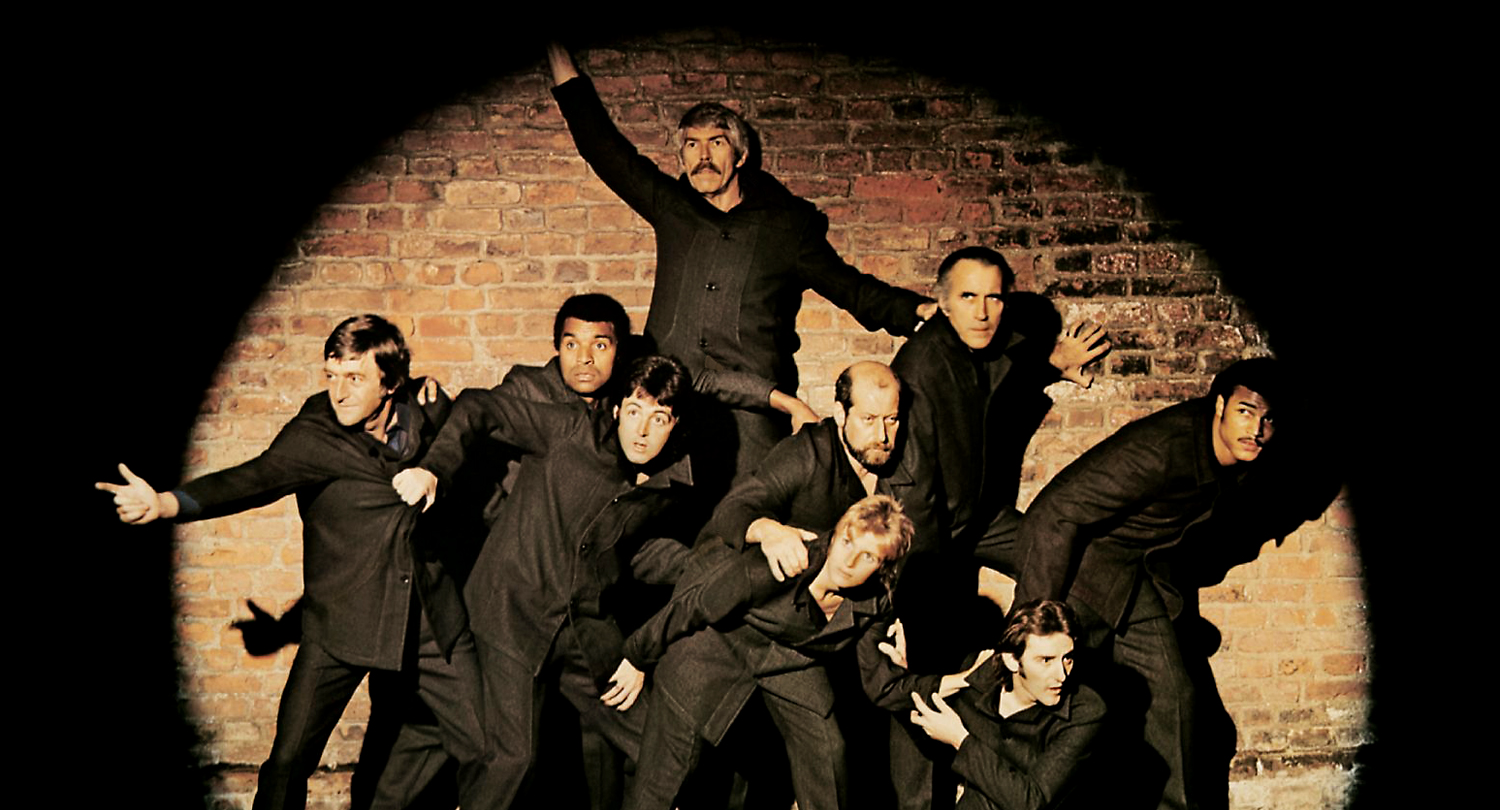Originally released in November 1973, Band On The Run was Paul McCartney & Wings’ third studio album and McCartney’s fifth overall release since The Beatles disbanded in 1970. Though Wings’ first two records–1971’s Wild Life and 1973’s Red Rose Speedway–sold very well, they were received quite negatively by some reviewers at the time. With Band On The Run, McCartney sought to take Wings in a different direction and regain critical favor.
Seeking a change of scenery, McCartney chose to record the new album at EMI’s facility in Lagos, Nigeria. The band and recording engineer Geoff Emerick spent close to two months in Lagos, during which the McCartneys were famously robbed of their demo tapes at knifepoint during an evening stroll. Though the sessions were wrought with numerous difficulties, recording at this exotic location did successfully infuse new songs like “Mamunia” with African polyrhythms and other world music elements.
Wings returned to London at the end of September 1973, where they quickly resumed work on the album at George Martin’s AIR Studios on Oxford Street. The 8-track session recordings from Lagos were transferred to a new 16-track machine in order to make room for overdubs, such as Howie Casey’s saxophone solo in “Bluebird” and a 60-piece orchestra conducted by producer Tony Visconti (T. Rex, David Bowie, etc).
Band On The Run quickly spawned two hit singles in the title track and “Jet,” ultimately becoming McCartney’s most successful release of the post-Beatles era. Today, many consider the album to be the definitive musical statement of his solo career.
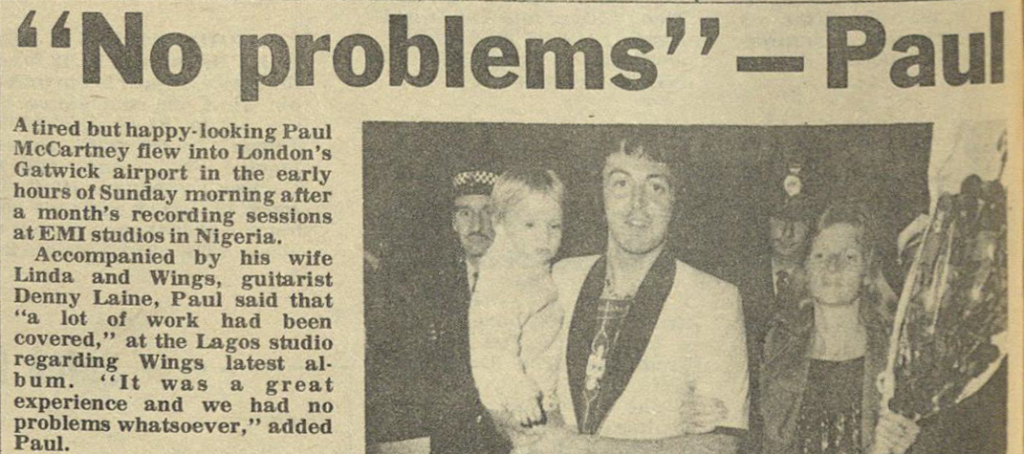
To celebrate Band On The Run’s 50th anniversary, longtime McCartney collaborators Giles Martin and Steve Orchard have created a brand-new Dolby Atmos remix of the album for streaming platforms. Martin and Orchard previously helmed the Atmos mixes of Red Rose Speedway and the McCartney I II III trilogy. The 50th anniversary digital package also contains new ‘underdubbed’ mixes (omitting Tony Visconti’s orchestrations and other overdubbed elements) of the original nine album tracks, which are also included in a 2LP deluxe set.
Interestingly enough, the new Dolby Atmos release marks the second occasion that Band On The Run has been remixed for an immersive format. It was one of two Wings records to receive a four-channel quadraphonic mix in the 1970s, the other being 1974’s follow-up release Venus & Mars. Though no Beatles albums were remixed for quad, several of the fab four’s subsequent solo records–including Ringo Starr’s Goodnight Vienna (1974) and John Lennon’s Walls and Bridges (1974)–were issued in the four-channel 8-track tape format by Capitol Records in the United States.
In the late-1990s, Band On The Run and Venus & Mars were both reissued in the short-lived DTS-encoded CD format by Mobile Fidelity International as part of their “High Definition Surround” series. Though marketed as “5.1 music discs,” the DTS releases actually contained digital transfers of the '70s-era quadraphonic mixes that were previously only available on 8-track tape.

Though marketed as a "5.1 music disc," the 1996 DTS-encoded CD of Band On The Run actually used a digital transfer of the 1974 quadraphonic mix (previously released on quad 8-track two decades earlier).
In reviewing this new Martin/Orchard Dolby Atmos mix, I felt it would be interesting to make comparisons with the previous immersive attempt at Band On The Run and see which version comes out on top. Additionally, three tracks from the album sessions (“Band On The Run,” “Mamunia,” and “Helen Wheels”) were remixed to 5.1 surround sound by Paul Hicks for 2007’s The McCartney Years video hits compilation–so I have those as an additional comparison point.
Looking just at the opening section of the title track, each of the three immersive mixes arrange the instrumentation around the listener in a unique fashion. The quadraphonic mix starts with the opening guitar line suspended between the front right and rear right speakers, while the synthesizer answers almost entirely from behind. The new Dolby Atmos mix instead places the opening guitar in the center channel and synth primarily in the left side speaker.
The 5.1 surround sound mix from The McCartney Years moves that guitar to the rear channels, with the synth now answering from upfront. This is definitely the most aggressive multichannel presentation of the bunch, as the electric rhythm guitars during the entire first half of the song (all the way through to when the orchestra comes in at around the two-minute mark) are 100% panned to the back.
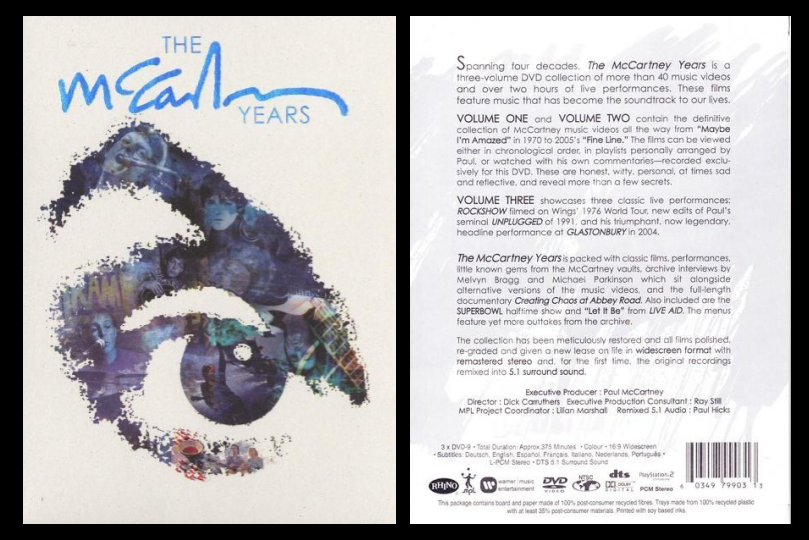
The 2007 3DVD release of The McCartney Years features new 5.1 surround mixes by Paul Hicks of “Band On The Run,” Mamunia,” “Helen Wheels” and various other McCartney hit singles.
Though I was a bit disappointed to find that the Dolby Atmos mix makes pretty sparing use of the top speakers, there is a fun moment where the reverb-y synth line at 1:10 (after “you…mama”) pops up in the rear heights. At around the two-minute mark, the group vocals singing “if we ever get out of here” appear entirely in the side surrounds to very cool effect. Both the quad and Atmos mixes then have the orchestra blast in from behind, with lead guitar staying upfront.
Paul McCartney’s acoustic guitar and vocals stay upfront during the second half of the song (starting at “when the rain exploded with a mighty crash…”), with the side and rear channels engaged primarily for vocal delays and harmonies. The lead guitar fills towards the end appear mostly in the front right speaker, though their delays travel up to the height speakers on the left-hand side of the room. Conversely, the quad mix places those same guitar licks in the rear and the delays upfront.
Moving into “Jet,” the Dolby Atmos mix is definitely the clearest I’ve heard this song to date. The group chants of “Jet!” pop up in the rear surrounds, with the bass synth mostly in the side speakers and lead vocal upfront. The recurring baritone sax riff hovers between the front right and side right speakers, with electric guitar taking up residence primarily over in the side left channel. The strings during the bridge section (“ah, mater…”) are completely isolated in the side right speaker.

The quadraphonic presentation of “Jet”–at least as heard on the DTS-encoded CD release–pales in comparison to the new Atmos mix. Nearly all the instrumentation (including the “Jet!” background chants) has been confined to the front stage, save for the bass synth that appears mostly from behind. The sound quality is quite poor as well.
“Bluebird” is one where I have to give the point to the quad mix, even though the low-end sounds much fuller in the Atmos remix. At around two-minutes in, Howie Casey’s sax comes entirely from the right rear speaker while the background vocals (“at last we will be free”) answer from the left rear. The Atmos mix relocates the sax to the front channels and background vocals mostly to the side surrounds, which just isn’t as exciting.
At least for me, “Mrs. Vandebilt” didn’t really satisfy in either rendition. The Atmos mix keeps most of the instrumentation upfront, save for the “ho-hey-ho” vocals and some keyboards in the side surrounds. All the vocals are 100% confined to the front channels in the quad mix, with the acoustic guitars appearing in the ‘phantom sides’ between the front and rear speakers. It would have been great to hear a more daring immersive take on this song, perhaps with the acoustic guitars pulled out into the side speakers and background vocals coming entirely from above.
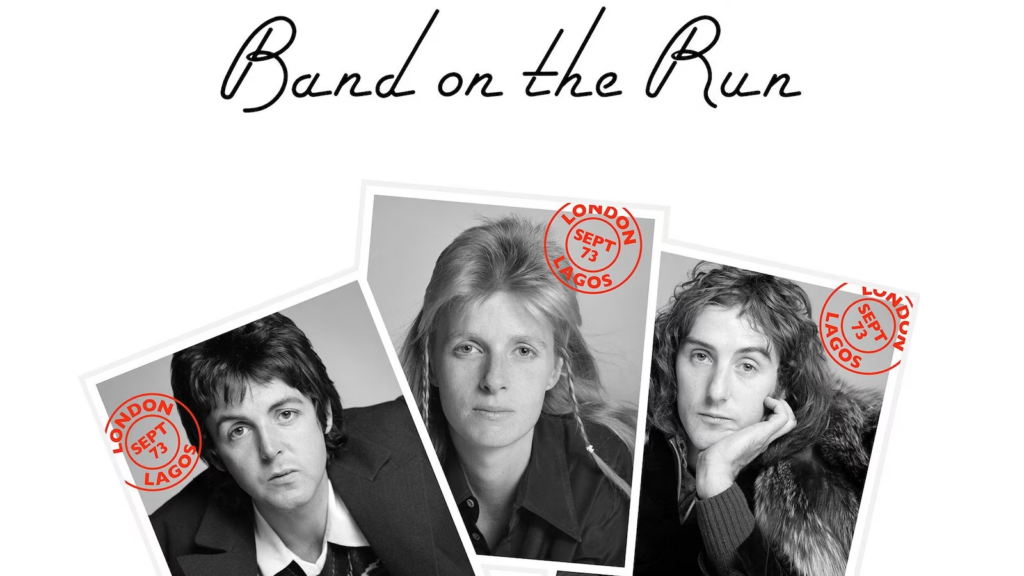
Like “Bluebird,” “Let Me Roll It” is another track where I’m torn between the vibrant sonics of the new Atmos mix and bolder spatial attributes of the quadraphonic mix. The big ‘voice of god’ delay on McCartney’s voice is 100% panned to the rear speakers in the quad mix, whereas it’s mostly kept upfront in Atmos. Unfortunately, the vocal delay is essentially the only element coming from behind in the quad mix: everything else is in the front. The Atmos mix feels more like you’re in the center of the performance–drums, bass, and lead guitar thunder in from upfront, with the organ mostly rooted in side right and rhythm guitar in side left.
Sparkling acoustic guitars fill up the sides for “Mamunia,” with vocals and percussion arrayed across the front stage. It would have been cool to hear McCartney’s double-tracked lead vocal split between the front and rear speakers, but it’s spread across the fronts only in both the quad and Atmos mixes. There’s a fun bit at the end where the synth swirls around the room in the quad mix, while it moves left-to-right across the side speakers in the Atmos mix.
Tony Visconti’s orchestrations are the main immersive feature of “No Words” and “Drink To Me (Picasso’s Last Words),” appearing largely behind the listener’s head in both the quad and Atmos mixes. Band On The Run then concludes with “Nineteen Hundred and Eighty-Five,” which is definitely one of the most impressive tracks from a surround sound standpoint. McCartney’s vocal ad-libs swirl all around the top speakers, with the explosive brass crescendo gradually building up from the sides. The short reprise of the title track appears entirely in the rears.
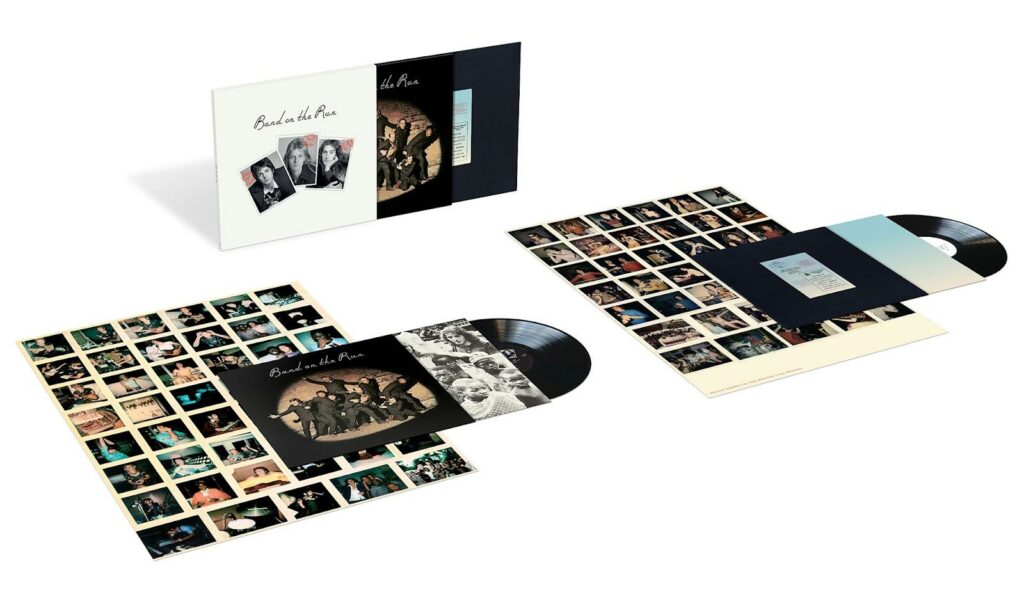
The 2LP 50th Anniversary edition of Band On The Run with “underdubbed” mixes.
The quad 8-track release of Band On The Run also included the non-album single “Helen Wheels” (recorded during the Lagos sessions), slotting it into the album sequence between “No Words” and “Picasso’s Last Words (Drink To Me).” The new Dolby Atmos mix of "Helen Wheels" is definitely more immersive than the older quad version, which is basically stereo upfront with some guitar licks doubled in the rears. Paul Hicks’ 5.1 mix from The McCartney Years is also very effective, with the rear speakers used primarily for rhythm guitar and harmony vocals.
Overall, though each version has its own merits and deficiencies, I found that the new Atmos mix offers the most rewarding listening experience overall. The leap in sound quality from the DTS-encoded CD to the Atmos stream on Apple Music is massive, particularly on “Jet” which I always felt had a kind of muffled ‘AM radio’ sonic signature even in its original stereo incarnation. That said, the ‘70s quad mix does at times make more adventurous use of the additional space.
As enjoyable as the new Atmos mix is, it’s incredibly disappointing that Universal Music Group and MPL Communications couldn’t come through with an audio-only Blu-Ray edition containing both immersive mixes–as was done for John Lennon’s Imagine box set back in 2018. It will be interesting to see if Venus & Mars and other McCartney/Wings albums receive Atmos mixes in the coming years (1971's Ram in particular would be great to hear in spatial audio), though it’s looking increasingly unlikely that any will be released in physical form.

